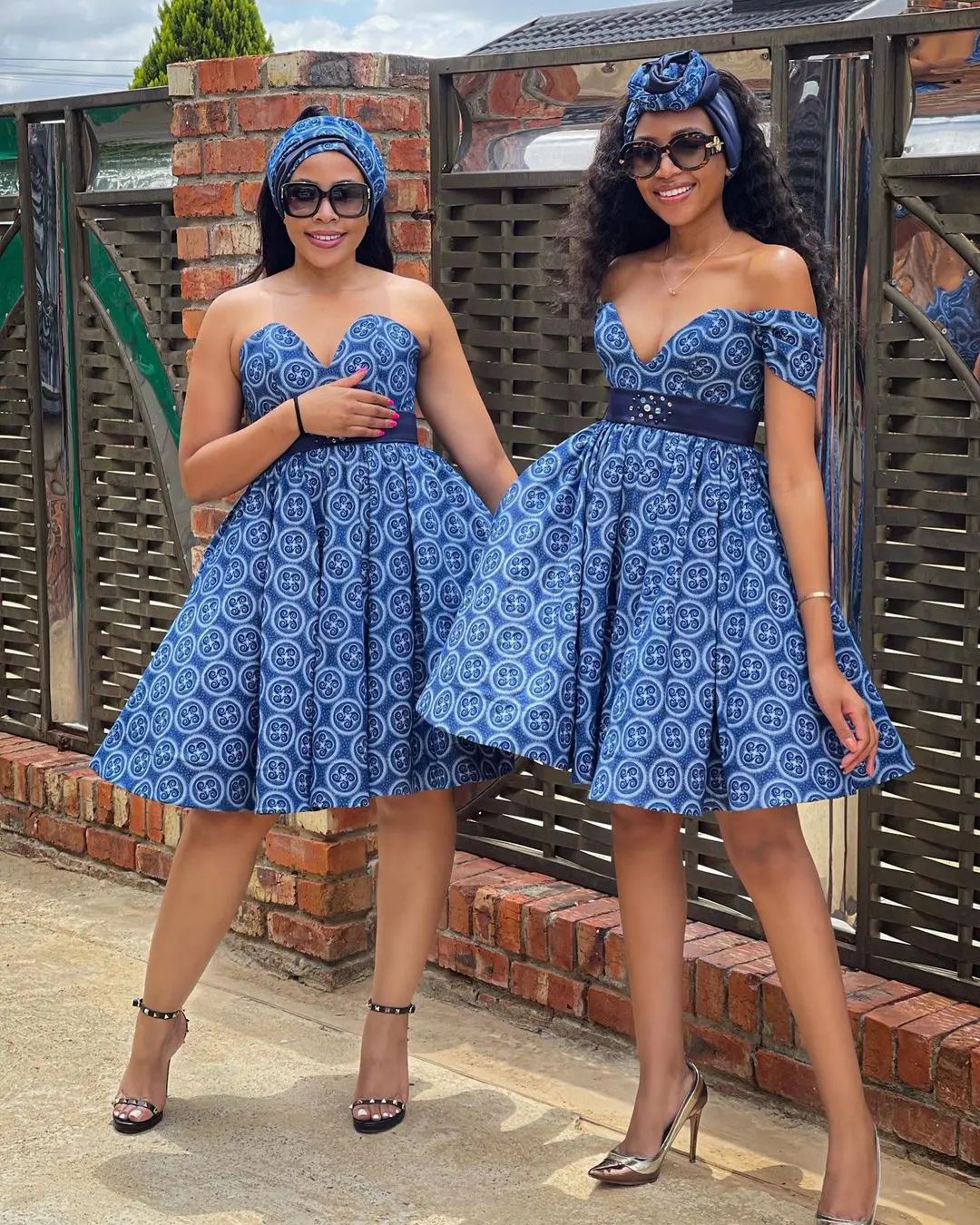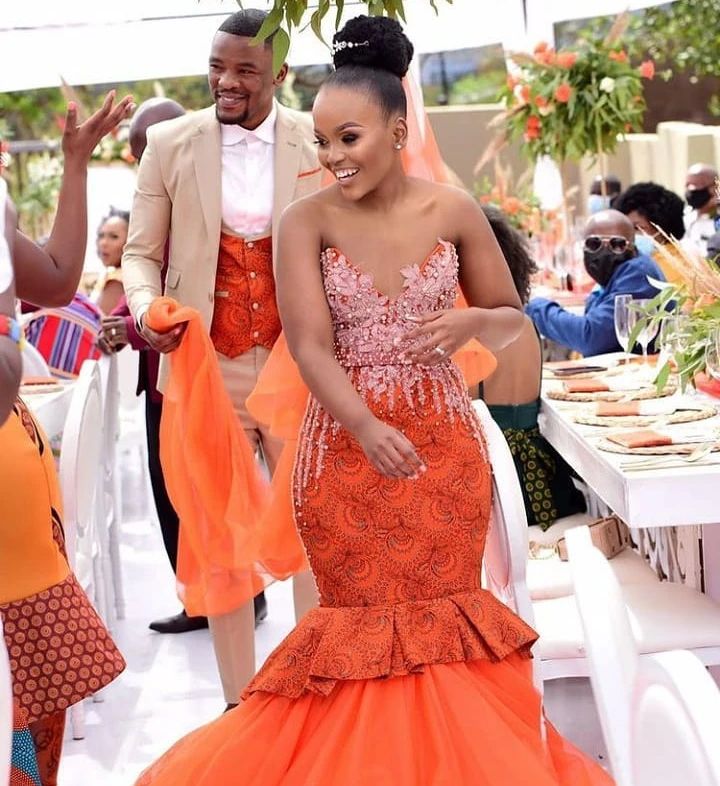The Art of Beadwork in Tswana Traditional Dresses

Introduction
The art of beadwork plays a significant role in the rich cultural heritage of Tswana traditional dresses. With its vibrant colors and intricate designs, beadwork adds a touch of elegance and uniqueness to these traditional garments.
Overview of Tswana Traditional Dresses
Tswana traditional dresses are known for their distinct style and symbolism. They are usually made of rich fabrics such as cotton or silk and are adorned with intricate beadwork, embroidery, and patterns. These dresses are worn on special occasions like weddings, festivals, and important ceremonies, reflecting the cultural identity and pride of the Tswana people.



Importance of Beadwork in Tswana Culture
Beadwork holds immense cultural significance in Tswana tradition. It is not just a form of decoration but also a way to tell stories, express social status, and convey personal identity. The colors and patterns used in beadwork often have symbolic meanings, representing aspects of nature, spirituality, or tribal affiliations. It is a traditional craft that is passed down from generation to generation, preserving the history and traditions of the Tswana people.
Overall, beadwork in Tswana traditional dresses is a testament to the creativity and craftsmanship of the Tswana culture. It showcases their rich heritage and serves as a visual celebration of their identity and traditions.


History of Beadwork in Tswana Traditional Dresses
Origins of Beadwork in Tswana Culture
Beadwork has been an integral part of Tswana culture for centuries, serving as a form of self-expression and cultural identity. It is believed to have originated from the San people, who introduced the art of bead making to the Tswana. The intricate designs and patterns were initially used to symbolize status, achievements, and tribal affiliations. As time passed, beadwork became more elaborate, incorporating various colors and materials.
Evolution of Beadwork Techniques and Styles
Over the years, beadwork in Tswana traditional dresses has evolved in both technique and style. While traditional methods involved hand-sewing beads onto fabric, modern advancements have introduced machine-stitching and the use of adhesive. The styles have also become influenced by contemporary fashion trends, resulting in a fusion of traditional and modern designs. Today, Tswana beadwork is known for its vibrant colors, geometric patterns, and intricate bead embroidery.


Despite the evolution of techniques and styles, beadwork continues to hold cultural significance in Tswana society. It is worn during important ceremonies and celebrations, symbolizing pride in heritage and a connection to ancestors. The art of beadwork in Tswana traditional dresses not only showcases the creativity and craftsmanship of the Tswana people but also preserves their rich cultural heritage for future generations.
Significance of Beadwork in Tswana Traditional Dresses
Symbolism and Meaning Behind Beadwork Patterns
Beadwork holds a deep cultural significance in Tswana traditional dresses. The intricate patterns and vibrant colors of the beads are not just for aesthetic appeal, but they also convey meaningful symbols. Each pattern tells a story, reflecting the values, beliefs, and history of the Tswana people. The use of specific bead colors and designs may represent a person’s marital status, age, social status, or even their clan affiliation. By wearing these dresses adorned with beadwork, individuals proudly display their heritage and express a sense of identity and belonging in the Tswana community.


Role of Beadwork in Traditional Ceremonies and Events
Beadwork is an integral part of Tswana traditional ceremonies and events. Whether it is a wedding, initiation, or other significant cultural gatherings, beadwork plays a crucial role in these celebrations. The beadwork patterns on the dresses worn during these occasions may differ, symbolizing the purpose and significance of each event. For instance, wedding dresses may feature beadwork patterns that represent fertility and prosperity, while initiation dresses may display symbols of growth and maturity. Beadwork not only enhances the beauty of the dresses but also serves as a visual language that communicates the importance and sacredness of these cultural traditions.
In conclusion, beadwork in Tswana traditional dresses holds immense cultural value. It is not merely decorative but carries deep symbolism and serves as an essential component in traditional ceremonies and events. The art of beadwork continues to be cherished and preserved by the Tswana people, emphasizing their rich cultural heritage and identity.


Techniques and Materials Used in Tswana Beadwork
Traditional Beading Techniques
The art of beadwork holds a significant cultural and historical value in Tswana traditional dresses. Tswana beadwork is known for its intricate patterns and meticulous craftsmanship. The traditional beading techniques include sewing, threading, and weaving beads onto fabrics to create beautiful designs. These techniques require precision and skill, passed down through generations, ensuring the preservation of this traditional art form.


Types of Beads and Materials Used in Tswana Beadwork
Tswana beadwork incorporates a variety of beads and materials, each with its unique significance. Traditional Tswana beads are made from clay, glass, shells, and metal. The colors used in Tswana beadwork are symbolic and often represent specific meanings or themes. The beads are carefully chosen and arranged to create aesthetically pleasing patterns and symbols that tell stories and convey cultural identity.
The art of beadwork in Tswana traditional dresses is not only visually appealing but also serves as a means of cultural expression and identity. It is a testament to the rich heritage and craftsmanship of the Tswana people, preserving ancient traditions and celebrating their cultural roots.
Types of Beadwork Designs in Tswana Traditional Dresses
Geometric Patterns and Motifs
Tswana traditional dresses are renowned for their intricate beadwork designs, and one of the most popular types is the use of geometric patterns and motifs. These designs often feature symmetrical arrangements and repetitive shapes, creating a visually stunning effect. Geometric beadwork can range from simple lines and triangles to more complex patterns like chevrons, squares, and diamonds. Each design carries its own symbolism and significance, adding a deeper meaning to the garment.

Animal and Nature-Inspired Designs
Another common type of beadwork design in Tswana traditional dresses is the incorporation of animal and nature-inspired motifs. These designs showcase the rich wildlife and natural beauty of the Tswana culture. You will find beadwork depicting animals such as elephants, zebras, and birds, as well as elements inspired by plants, flowers, and landscapes. These designs not only add aesthetic appeal but also reflect the deep connection that the Tswana people have with their environment.
In summary, Tswana traditional dresses feature a variety of beadwork designs, including geometric patterns and motifs as well as animal and nature-inspired themes. These designs not only enhance the visual appeal of the garments but also hold cultural and symbolic significance, reflecting the unique heritage of the Tswana people.
